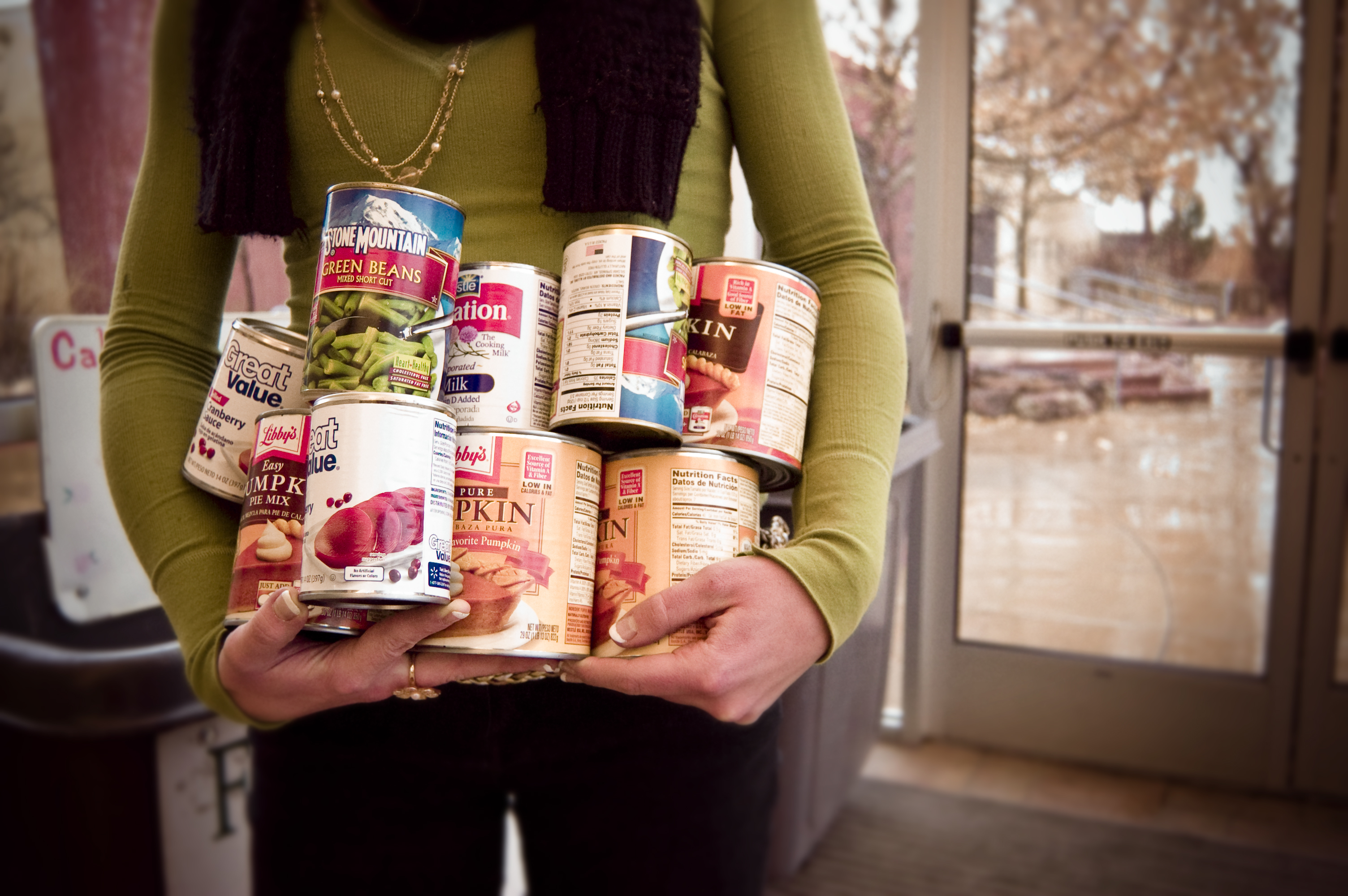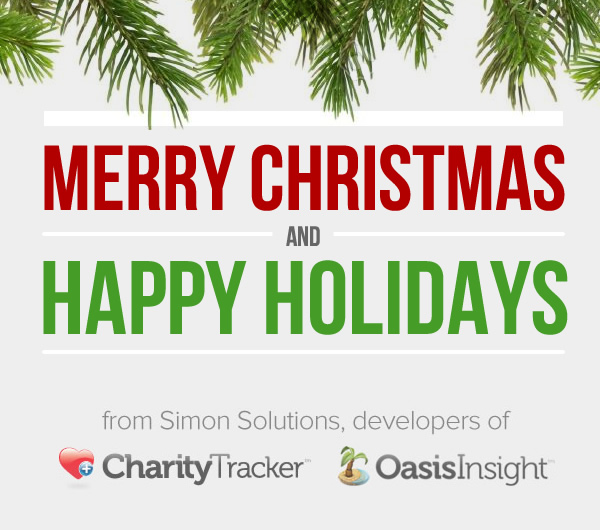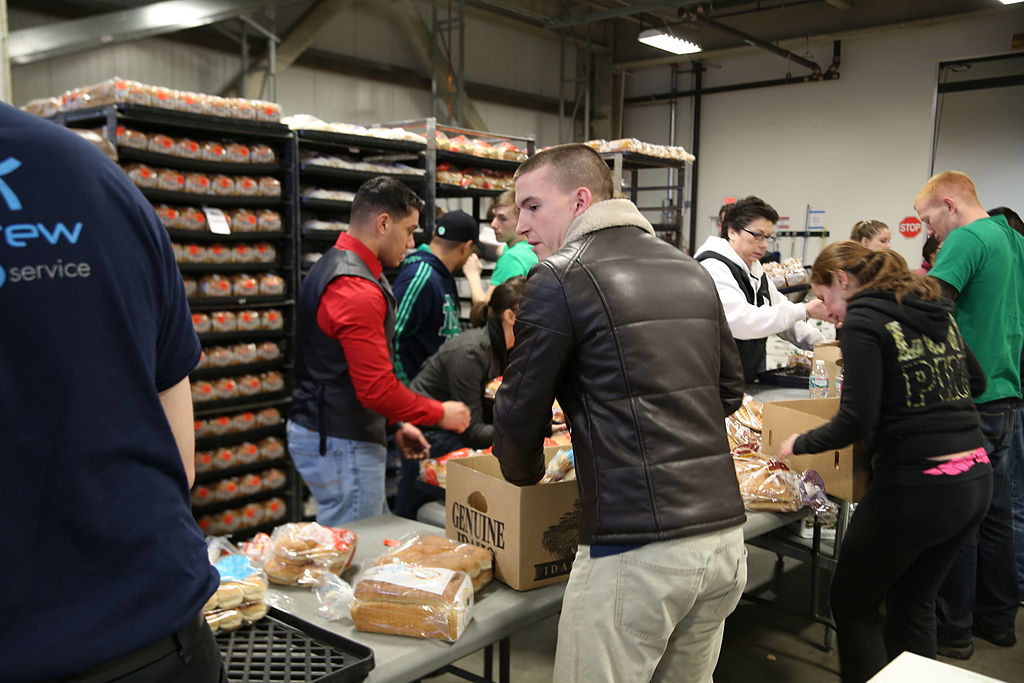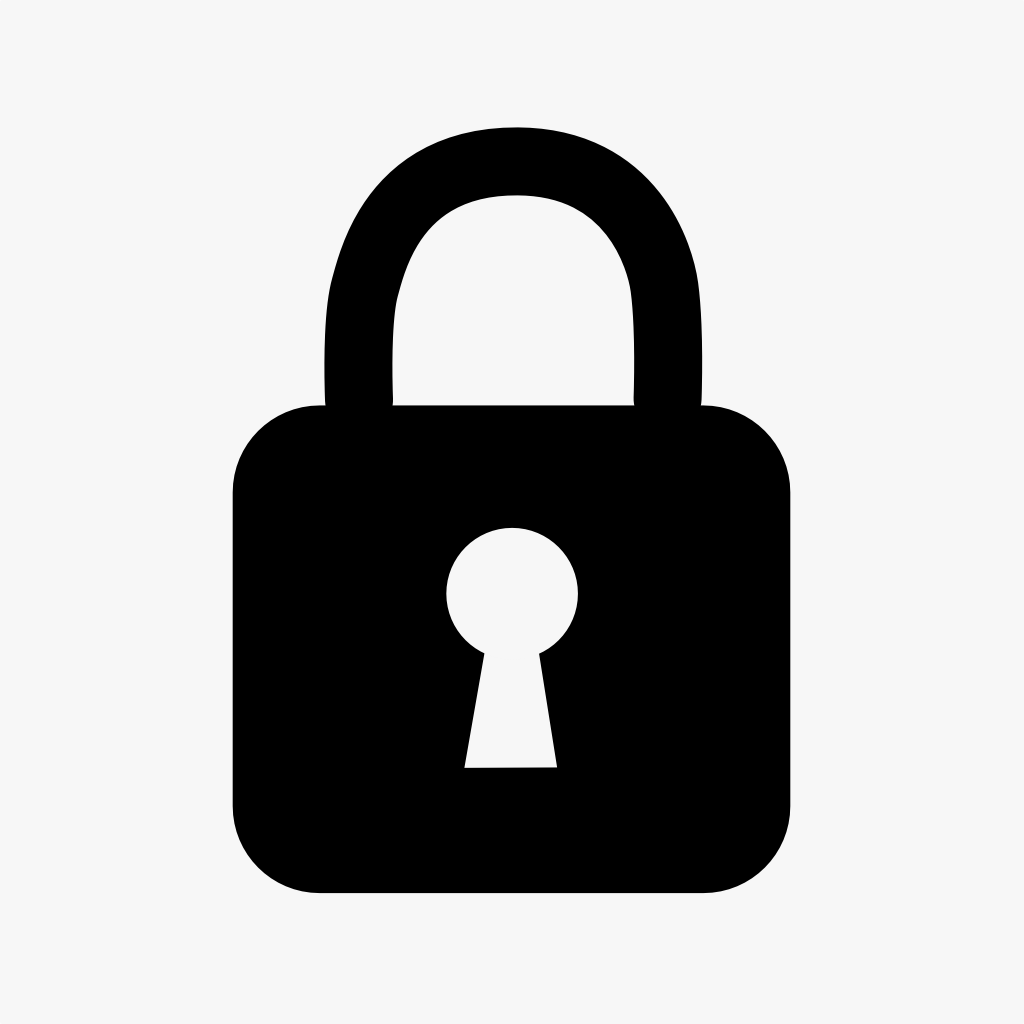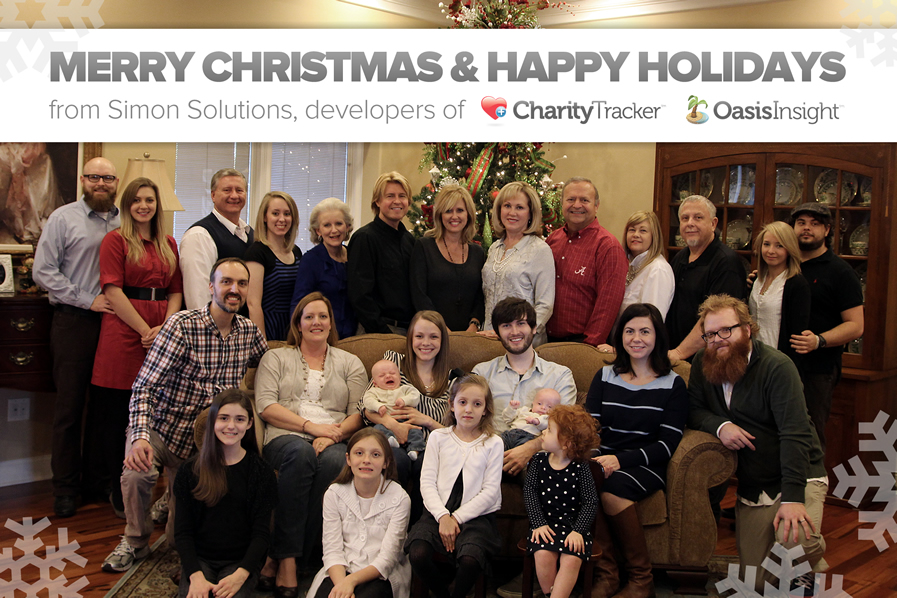Entries in the 'Info' Category
Nov. 30, 2016, 11:30 a.m.
·
0 comments
A note from Simon Solutions...We invited Barbara Duncanson of Emerge Solutions, to share with our CharityTracker and Oasis Insight networks information about this developing online learning community. Emerge Solutions and its members can be especially helpful to any of our networks utilizing the Bridges Out of Poverty and Getting Ahead solutions for their community. Barbara explains more in this blog and then check out the web site! Simon Solutions is already a proud member! To learn more about CharityTracker and our Getting Ahead module, check out this free webinar: Helping People Create a Plan for Stability - Krista Petty, Simon Solutions Community Connector
Meet EMERGE SOLUTIONS!
By Barbara Duncanson
If you’re already a CharityTracker or Oasis Insight client (or considering becoming one), you are naturally collaborative, understanding the advantages of working together across organizations and communities to more effectively serve people in need. And you’re eager to adopt the latest ideas and technologies that can help you stretch limited resources and effect real change in individual lives and in your community.
Now, there’s a growing organization that can complement your resources from CharityTracker, further expanding your knowledge network and your access to best practices, data and latest tools.
Emerge Solutions is a nonprofit virtual organization through which members across the country are sharing their challenges and successes in ending poverty in their communities. Its mission is to promote lasting solutions to close the economic gap and build community sustainability at the local, regional, and national levels.
It was founded especially for nonprofits, businesses, governmental agencies, educators, religious organizations, healthcare organizations and others that view the current economic disparity in our nation with alarm, and understand that by addressing this disparity, we both strengthen the social fabric and become more effective allies to under-resourced individuals moving toward self-sustainability.
Emerge Solutions aims to be a positive force for reducing this economic disparity by supporting initiatives to advance economic equality through collaboration, education, advocacy and proven solutions.
Emerge Solutions began when several representatives of communities using Bridges Out of Poverty constructs from the publishing and training company aha! Process discovered a common dilemma. While the constructs had the power to facilitate understanding about the nature and causes of poverty in diverse audiences across the country – creating true “aha!” moments --, the questions of “what do we do now” and “how do we implement what we’ve learned” were not easily answered.
These representatives founded the organization in 2012 under the name Advancing Bridges. It was renamed Emerge Solutions in 2015. The new name and tagline, “Breakthroughs in Closing the Economic Gap,” better reflect the organization’s mission, emphasis on collaboration and expanded focus on seeking out and promoting proven solutions to transform communities from a broader range of sources.
Today, Emerge Solutions is a member-driven, nationwide organization for those dedicated to closing the economic gap. Membership is expanding beyond communities using Bridges Out of Poverty to those, like the Society of St. Vincent de Paul, that are approaching the elimination of poverty through a variety of lenses and strategies.
Two recent developments underscore Emerge Solutions’ emphasis on becoming the premier resource for individuals and organizations working to end poverty:
•Emerge Solutions was named a service provider in a $750,000 grant to the Lucas County, Ohio, Bridges Out of Poverty organization. Emerge Solutions will provide a platform to share challenges and best practices to the grant coalition.
•Emerge Solutions began reaching out and forging relationships with other individuals and organizations whose products, services, information, ideas or other resources may benefit our members, including CharityTracker.
“I’m consistently amazed at how the resources and relationships I’ve gained through Emerge Solutions have enriched my day-to-day work to prevent and alleviate poverty in Ohio,” said Stephen MacDonald, chair of Emerge Solutions’ board of directors and coordinator for Lucas County’s Bridges Out of Poverty initiative. “And the more our membership grows, the more we will be able to give back to members as well as influence issues impacting poverty on local, regional and national levels.”
Emerge Solutions invites you to join its commitment to close the economic gap. It’s easy and cost-effective to become a member. For an annual membership fee of just $35 ($100 for an organizational membership including three individual memberships), members enjoy benefits such as:
•Networking through Emerge Solutions’ Community of Practice
•Blogging opportunities
•Access to a directory of members
•Links to web-based resources
•A quarterly newsletter
•Opportunities to join virtual committees working in marketing and membership, best practices, advocacy, finance and fundraising
You can learn more by visiting the organization’s website at www.emergesolutions.org.
Categories:
Info
Oct. 24, 2016, 11:41 a.m.
·
0 comments
In our October webinar, Mike Simon and Cathy Easley introduced us to a Transformational Roadmap, helping us see how communities come together to help people move along a continuum of care to create a new future of stability. Our November webinar goes deeper into how to effectively walk alongside people desiring to change their circumstances.
Simon Solutions has partnered with Getting Ahead because we deeply believe that communities should come together to offer transformative solutions, not just offer temporary relief. On November 1st, you will get to meet Phil DeVol, author of Getting Ahead in a Just Getting by World. He will present the constructs a community can use to help people write a new story of stability for themselves and their family.
November Webinar: Getting Ahead: Helping People Create a Plan for Stability
Nov 1, 2016 1:00 - 2:00 PM CT
with Phil DeVol, author of Getting Ahead in a Just Getting By World
Click Here to Learn More & Register for November Webinar
Learn about:
• How Getting Ahead class participants, called “investigators,” examine their own experience of poverty as well as explore issues in the community that impact poverty
• How Getting Ahead facilitators guide “investigators” through an assessment of their own resources and how to build those resources as part of their move to self-sufficiency
• How lives are challenged and changed and how Getting Ahead graduates are provided support from Bridges Out of Poverty collaboratives as they work toward their goals.
• How CharityTracker and Getting Ahead have partnered to assess and measure “investigator” success
Phil is an international consultant who has been working with aha! Process since 1997. He used aha! Process concepts to make institutional changes at the addiction treatment center where he was the executive director for 19 years. During this time he also co-wrote Bridges Out of Poverty with Ruby Payne and Terie Dreussi-Smith. His book Getting Ahead in a Just-Gettin’-by-World is being used to engage people in poverty in the work of building communities where everyone can live well. It worked so well that DeVol used it as a basis for a prison reentry model called Getting Ahead while Getting Out.
He works with community leaders to help them move quickly from an attraction to application of Bridges concepts. Getting Ahead and Bridges are being used in hundreds of communities in the U.S., as well as a number sites in Canada, Australia, Ireland, Scotland, Slovakia, and the Czech Republic. His books have been translated into Spanish, Slovak, and Czech.
This completes are Fall Transform Tuesday Webinars. Look for more webinars coming January 2017! Have an idea for a webinar you’d like to see from the Simon Solutions team? Email krista@simonsolutions.com
View our past webinars, power points and hand outs.
September Recording: Getting the Maximum Benefit from Technology
September Handouts and PPT files
October Recording: Funding is Changing
October Handouts and PPT files
Categories:
Info
Sept. 26, 2016, 1:52 p.m.
·
0 comments
Once a month this fall, Simon Solutions will host a FREE webinar, bringing even greater transformation to your community through innovation and collaboration. Our September webinar was a great success with 135 people registering!
Fall 2016 Schedule
September: Getting the Maximum Benefit from Technology to Build Capacity & Collaborate
Held on Tuesday, Sept 20, 1- 2 PM CT
Click here to watch webinar recording
Click here to download Handouts & PowerPoint Slides
Hear from Shelly Parks and Kelcey Ellis, leaders in two of San Diego’s largest food banks, about building the capacity of their food distribution partners. In San Diego, people began lining up as early as 2:00 a.m. to receive a box of food and the line stretched around the block. Today, with collaboration and technology, the wait time is 30 minutes or less. They describe their processes and work together. No matter what agency you work in, there are principles, tips and tools to learn from.
October: Funding is Changing. Are You Keeping Up?
Oct 18, 2016 1:00 - 2 PM CT
with Mike Simon, co-founder of Simon Solutions
Cathy Easley, Trident United Way, Charleston, SC
Click here to Learn More & Register for October Webinar
Learn about:
• The New Funding Logic Model
• Measuring Input, Activities, Outputs, Outcomes and Impact
• The importance of creating a transformational roadmap
• The technical tools that can help you put it all together
November Webinar: Getting Ahead: Helping People Create a Plan for Stability
Nov 1, 2016 1:00 - 2:00 PM CT
with Phil DeVol, author of Getting Ahead in a Just Getting By World
Click Here to Learn More & Register for November Webinar
Learn about:
• How Getting Ahead class participants, called “investigators,” examine their own experience of poverty as well as explore issues in the community that impact poverty
• How Getting Ahead facilitators guide “investigators” through an assessment of their own resources and how to build those resources as part of their move to self-sufficiency
• How lives are challenged and changed and how Getting Ahead graduates are provided support from Bridges Out of Poverty collaboratives as they work toward their goals.
• How CharityTracker and Getting Ahead have partnered to assess and measure “investigator” success
Let's learn together this fall!
Categories:
Info
July 5, 2016, 3:56 p.m.
·
0 comments
By Krista Petty, Community Connector
Do you know how CharityTracker and Oasis Insight got their start? Our technology company was simply asked to help our local community. From that adventure in serving our neighbors in need came a huge innovation that has spread across the United States. It's beyond what we could have ever imagined! Here's a bit of our story, if you haven't heard it already.
Big Storm Brings Synergy...
When Hurricane Katrina hit a stretch of Alabama coast in 2005, it devastated small coastal shrimping towns like Bayou La Batre and others along Mobile Bay. And while the storm had an immediate and visible effect coastally, many did not see the ripple affect into other communities.
The Ripple North...
Southern Alabama families and entire neighborhoods migrated almost 400 miles north, settling in a metropolitan area in northwestern Alabama called The Shoals. Agencies and churches in The Shoals area quickly formed a VOAD (Voluntary Organizations Active in Disaster) coalition to provide a continuum of care, response, and recovery for these displaced families. Some community agencies worked for upwards of 18 months or more to help relocate families. The VOAD team included the United Way, Red Cross, Faith Church, people from the Social Security Administration and many other churches and agencies.
A Collaborative Spirit Not Enough
While the agencies, organizations and churches in the Shoals had a collaborative spirit, they found communication and coordination difficult. With 330 families to place, resources dried up quickly. Agencies discovered they weren’t always getting the same information from people, and didn’t know who was giving aid to whom.
As the agencies continued to work together, even after the immediate disaster was over, they realized the need for better coordination and communication. They needed to tool to be able to share information in real time to work more effectively together. After checking into several system options and finding them either ineffective or too costly, the VOAD team and United Way director began working with locals Mike Simon and his team of software and web developers at Simon Solutions to create a tool specifically to meet their needs. What was created by was an affordable, easy-to-use, web-based system by which agencies and churches could share their assistance records and information with one another.
CharityTracker was born...
While we did not realize it at the time, we created a useful tool for our community that could be utilized for every community and city in America. From our humble beginnings in disaster relief for our own community, CharityTracker has grown to be used in 1,049 cities and has continued to innovate solutions. We've come a long way, like creating more in-depth reporting features and building in the opportunity to track outcomes and assessments. We've had many developments, like Oasis Insight, which was created off of CharityTracker to serve the specific needs of food banks and food pantries with a variety of innovations and technology solutions.
What began as a mission to help our local community has grown into a vision to help every community in the U.S. to build strong collaborative networks that transform communities. Long story short, we build web applications. We’re nerds with a passion for making computers work for you, not against you. Our manifesto is simple - carefully listen and continually improve. It's how we got started and how we continue to operate today. Thanks for joining us on this adventure for the past 10 years!
Above photo of by Marvin Nauman (This image is from the FEMA Photo Library.) [Public domain], via Wikimedia Commons
Categories:
Info
June 13, 2016, 12:13 p.m.
·
0 comments
By Krista Petty, Community Connector
In the past year, I have interviewed many people whom I consider champions in serving their local communities. Meet one of those champions! Liz Gomez is Outreach Programs Manager of Alameda County Community Food Bank. She implemented Oasis Insight to track her team's CalFresh Outreach (California’s SNAP program). The Alameda Food Bank provides CalFresh prescreening and application assistance in five different languages. They also offer free training for community agencies to help identify potentially eligible CalFresh recipients. Their CalFresh 101 for beginners gives the basics on program eligibility, including prescreening. CalFresh 102 for advanced learners gives an in-depth look at eligibility for special populations such as seniors, disabled, immigrants, felons and homeless. They have been using Oasis Insight to track their progress for three years.
is Outreach Programs Manager of Alameda County Community Food Bank. She implemented Oasis Insight to track her team's CalFresh Outreach (California’s SNAP program). The Alameda Food Bank provides CalFresh prescreening and application assistance in five different languages. They also offer free training for community agencies to help identify potentially eligible CalFresh recipients. Their CalFresh 101 for beginners gives the basics on program eligibility, including prescreening. CalFresh 102 for advanced learners gives an in-depth look at eligibility for special populations such as seniors, disabled, immigrants, felons and homeless. They have been using Oasis Insight to track their progress for three years.
Liz, Can you describe how you and your team use Oasis Insight?
Liz: Oasis is our client management tool for CalFresh outreach work. We use Oasis to collect the information of the households we assist and to track our activities and events. Currently, we have 15 staff on our team and everyone is a user. We are also in the testing phase of utilizing Oasis to work with our subcontractors for CalFresh outreach as well. Our subcontractors include a health clinic, call centers, nonprofits, and one hospital.
Tell us more about the relationship with subcontractors. What data will you share across your network?
Liz: Our subcontractors can view their own clients, but not ours. Using Oasis with them will be helpful because we need to collect monthly reports on our CalFresh outreach. Oasis allows us to keep all the client data in one place so we will no longer need to pick up tracking logs. We, at the food bank, are able to do reports and activities ourselves. We have already launched this with one of our subcontractors, a childcare referral agency hotline. In all, we will have five to six subcontractors with 20 users (in addition to existing team).
Can you share about your Oasis user experience?
Liz: Yes, our team finds Oasis user-friendly. We usually spend five to six hours training new users on the system and once they start using it, people really get the hang of it. For us, Oasis is really working.
Did you do any customized work within Oasis, such as tracking or forms?
Liz: We have made numerous customizations with the Oasis team for our tracking and reporting needs. We are currently customizing tracking methods for our subcontractors with Oasis. We track events, activities and have subcategories, such as whether or not we did a presentation or if we were talking with people one-on-one at a booth. We also created a fillable Release of Information form that auto-populates. We have this form in three different languages.
What were you using before Oasis and why did you switch systems?
Liz: Before Oasis, we used a customized Access database and excel reports. I attended the Feeding America conference and Oasis representatives were tabling there. I brought back a brochure and set up a demo. It was such good timing, as we were looking for a new system. We run monthly reports as well as periodically, if needed, and the reporting was what really sold me on Oasis Insight as well as the security that it provides.
What process did you go through to bring Oasis to your food bank?
Liz: I needed buy-in from the leadership here and from our IT department. They needed to know that it was a platform that could be used in a secure manner. It is our client data and where information is stored is very important to us. I invited our IT team to explore Oasis with me. After our questions were answered IT felt like it offered what we needed. We also felt like ongoing maintenance was important. We needed good response turnaround time and it has been.
How is your Oasis network funded?
Liz: We receive a SNAP grant and our subcontractors will be covered by that as well for their Oasis implementation process.
What is one Oasis feature you are looking forward to exploring in the future?
Liz: I am definitely looking forward to using Oasis in communications with subcontractors. When I first used Oasis, I was thrilled about bulletin feature. My internal team does not currently use it much because we are regularly on outlook, or can just walk over to each other and interact that way. I can see the bulletin feature of more benefit if we are not in the same location or with our subcontractors.
Oasis Insight will be at the Feeding America ACPN Conference in Chicago July 11 & 12. Come by and see us!
Learn more about SNAP Outreach & Oasis Insight in our Case Study: Streamlining SNAP/CALFresh Outreach with Technology.
Categories:
Info
June 3, 2016, 11:37 a.m.
·
0 comments
By Krista Petty, Community Connector, Simon Solutions, Inc.
I’ve been reading a lot about collective impact and networks for social change these days. Both terms are all the rage in the nonprofit and social sectors and for good reasons. There are a lot of case studies showing that when an entire community collaborates, everyone wins and transformation can happen. Isn’t that what we all want? IMPACT and CHANGE. We want to see measurable and dynamic change in individual lives, leading to systemic improvements in our communities. We are looking for transformation on an individual and community-wide scale.
One critical component of collective impact is the use of data to inform solutions. Collecting and analyzing data is KEY. “Data - and the many new analyses and uses of it - enable us to better understand what is happening in communities and the larger society,” writes Richard Harwood in his Huffington Post column.
Of course at Simons Solutions we love hearing that! It’s what our CharityTracker and Oasis Insight systems are all about: collecting data. Our systems are built to not only collect your agency data, but to share data and collect it collaboratively for your community. It’s a win in the first steps of collective impact. Our systems are also built to help you communicate agency to agency, networking you with others who are also working towards change.
What data and even networking across agencies cannot do, however, is cultivate the relationships with the community, where sustainable change happens. Data and even agency to agency communication are not enough to inform the work of community transformation. Building trusting relationships within the community and involving community members in developing solutions is the foundational ingredient to true impact and social change.
In their article Community Engagement Matters Now More Than Ever Melody Barnes and Paul Schmitz summarize, “Data-driven practices and programs hold great promise as a means for making progress against seemingly intractable social problems. But ultimately they will work only when community members are able to engage in them as leaders and partners. Community engagement has two significant benefits: It can achieve real change in people’s lives—especially in the lives of the most vulnerable members of a community—and it can instill a can-do spirit that extends across an entire community.”
Data can inform your work in the community, but, data alone can’t transform the community. In fact, data can sometimes cause us to operate from a top down mentality, instead of a grassroots one. In their article, Barnes and Schmitz share stories of how good data and plenty of financial resources went to the way-side all because relational capital within the community was profusely lacking.
And, communicating agency to agency can be valuable, but if you don’t involve and engage the community members you desire to serve in the process of solutions, you will fall short every time.
From what I’ve been reading, it seems that communities are transformed from the inside out, not necessarily from the outside in. How is your network using data, communication agency to agency AND community engagement to bring about transformation? We’d love to hear from you! Email me at Krista@simonsolutions.com to share your story.
You REALLY Need to Click on these links below!
For more information about engaging with the community for solutions, I highly recommend Tom Wolff's bookThe Power of Collaborative Solutions.
For more information on Collective Impact, visit: Stanford Social Innovation Review .
To learn about Networking for Social Change, check this out: 4 Questions to Ask Before You Engage In Networking.
Categories:
Info
May 20, 2016, 12:53 p.m.
·
0 comments
There are diverse opinions about public assistance programs. Capturing data, aggregating and analyzing it can give a human service agency, a church benevolence program or food bank a more accurate story of those coming through their doors and receiving assistance.
Kirk Goodman of East Texas Food Bank says he runs network-wide reports of assistance in a year by client households. It tells him a story. “Our average clients visit a food pantry six or seven times a year. There are several months where they are not visiting. Almost 25% of our clients only come one time a year. There are comments these days about people living off of the system. 25% of people coming only once a year is not evidence of someone abusing the system. That is someone who needed help, got it, and then went back about their business,” he says.
Goodman uses this data, gathered and stored in their Oasis Insight Network, to inform partner agencies and the community, helping people understand the narrative of hunger insecurity in East Texas.
How do you use your CharityTracker and Oasis Insight data and reports to challenge misconceptions and tell the narrative of assistance in your community? We’d love to hear from you! If you have a story to share, email our Community Connector, Krista Petty at krista@simonsolutions.com.
To learn more about how Food Banks utilize the power of data to build the capacity of partner agencies, see our FOOD BANK CASE STUDY.
Categories:
Info
Dec. 10, 2015, 6 a.m.
·
0 comments
Categories:
Info
Dec. 8, 2015, 4:51 p.m.
·
0 comments
(About the Photo: More than 20 Marines from U.S. Marine Forces Command and the II Marine Expeditionary Force help package bread at the Greater Boston Food Bank in Boston, Massachusetts, March 17, 2015. By Lance Cpl. Calvin Shamoon (https://www.dvidshub.net/image/1828174) [Public domain], via Wikimedia Commons)
Jonathan Tetrault serves as Senior Manager of Community Initiatives at The Greater Boston Food Bank, where they have built a network of 600 partnering agencies for food programs and distribution. “It is great to be a hub and resource for food in our community, but at the end of the day if we don’t have strong partnerships, the food in our warehouse doesn’t do any good. We can’t sit in a corner office of the city and decide how to serve the 190 cities and towns in our service area. We have to empower agencies in our communities to do that,” shares Tretault.
A food bank’s network of partners, like The Greater Boston Food Bank, can range in capacity from a rural, church-based food pantry serving 10-20 people a week to a large urban shelter providing hundreds of meals daily. Partner agencies follow basic partnership agreements with food banks, including how they store and distribute food as well as meet reporting deadlines.
Capacity building for partners can happen in a number of ways. For example, the Capital Area Food Bank in Austin gives approximately $125,000 per fiscal year to partner agencies by way of grants for things like cold food storage. “As food banks realize their vision of providing healthy foods, like more fresh fruits and vegetables, they must equip their partners to accommodate those perishables,” says Heath Ribordy, Agency Relations Manager.
Food banks give partners support well beyond food distribution and storage, though. “We try to strengthen that network of partners by doing grant programs, best practices, growth planning and consulting with them,” says Tetrault in Boston.
Since 2011, Oasis Insight has been serving food bank agency relations and program directors by providing affordable client database, assistance recording and reporting solutions. “We are encouraging our partners to move to things like Oasis Insight, which means moving some of them from the index card and shoebox filing system,” shares Tetrault.
Expanding One Boston Agency Beyond the Basement
One agency in Boston’s metro region was doing quite a lot of food service for their community out of a church basement and was clearly outgrowing that facility. Without an accurate reporting system, the agency could not really tell a story with the numbers they had.
Tetrault shares, “We helped them get the technology needed to start using Oasis Insight. Now that they have good data they have been able to use it and form their story and pitch their need for a new facility to their funders and community. They are now in the process of purchasing their own facility and renovating that space so that they can really expand the service they are offering their clients!”
Want to learn more about how Oasis Insight and Food Banks partner together?
Download our full Case Study: More than Warehouses: Food Banks Build the Capacity of Partnering Agencies.
This study includes interviews with five different Food Bank leaders about their capacity-building work and implementation processes for improving technology, collaboration and reporting.
Categories:
Info
April 11, 2014, noon
·
2 comments
Earlier this week, researchers disclosed a critical vulnerability in
recent versions of the OpenSSL library, known as the Heartbleed bug.
You'll be glad to know that our servers were patched two days ago (4/9/14) and new security certificates were put in place yesterday (4/10/14).
Heartbleed cannot affect our servers now.
While we have received no indication that CharityTracker or Oasis Insight were compromised in any way, we recommend changing the passwords your team uses to log in as a precautionary measure.
Our security team will continue to monitor this issue and provide more information as necessary.
If you have concerns related to the security of your CharityTracker or Oasis Insight account, please send us an email.
Categories:
Info
Jan. 21, 2014, 6 a.m.
·
4 comments
With custom-built reports we can help your organization improve efficiency and get even more value out of our case management software.
Do you often run multiple reports only to have to combine the information into a single report later? If so, you may be interested in a custom-built Report.
Show us an example of what you need a report to look like and our development team can create that report and make it available to only your agency or your entire network.
We can produce reports in several common file formats such as EXCEL spreadsheets, PDF files, or simply display them in your browser like the standard built-in reports. We can even add visual enhancements like graphics and charts at your request.
We'd love to make your life a little easier. Give us a call at 1.888.764.0633 or send us an email to let us know your needs.
There is a one-time fee associated with a custom-built report. Prices start at $150 and are billed on a per-hour basis. Our technical support staff would be happy to discuss your specific needs with you and provide a quote for the proposed customizations.
Categories:
Info
Dec. 17, 2013, noon
·
0 comments
At Simon Solutions we are beyond grateful to have the opportunity to provide our clients with tools to heal people’s lives and make a real difference in the world.
We all know that charitable giving and volunteerism greatly increase during the holiday season.
Only a few are strong enough to be a hero every day of the year.
We salute you!
Please share with us your stories of how using CharityTracker and Oasis Insight has been helpful in your work. You can leave a comment here on our blog or send your story to us at stories@simonsolutions.com
Please send us your office/crew photos and we will proudly share them to our social media sites.
Merry Christmas & Happy Holiday from Simon Solutions!
Categories:
Info
June 5, 2013, 11:22 a.m.
·
0 comments
Chances are there are others in your community with the same vision of helping those in need and collaborating but are not yet a part of your CharityTracker network. The full potential of CharityTracker is realized when a community works together!
You've probably noticed the "Invite" button found at the top of the CharityTracker screen. Here is where you can quickly send invitations to care providers in your community who you think would benefit from joining the network.
If you haven't used the Invite button before please watch this introduction video. Are you ready to help grow your network?
If you have a tip that worked for you that could help others grow their network, please leave a comment below...
Categories:
Info
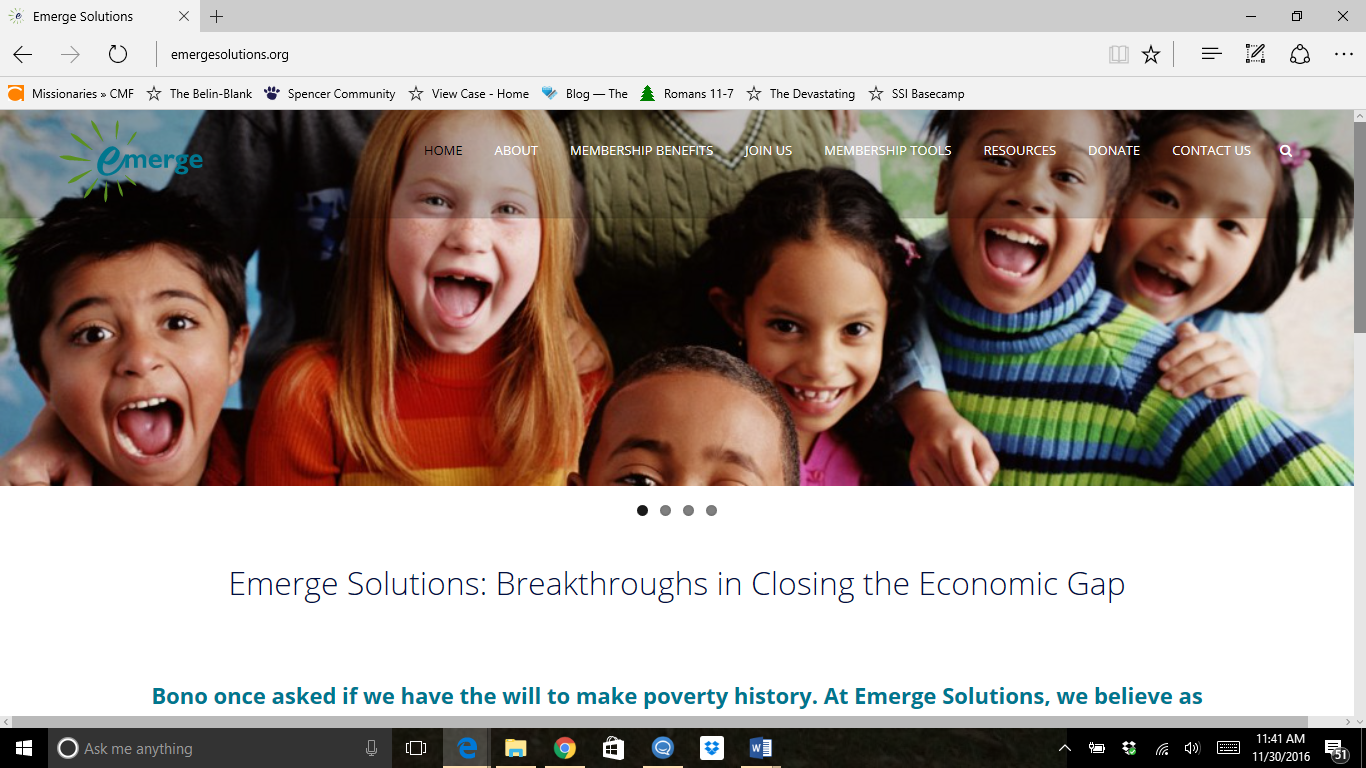



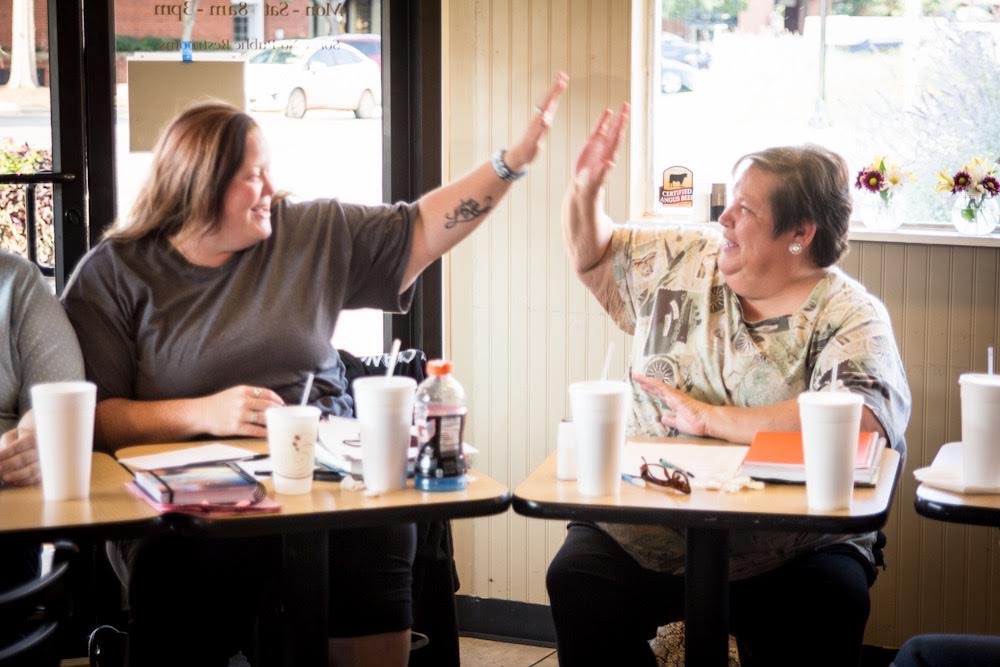
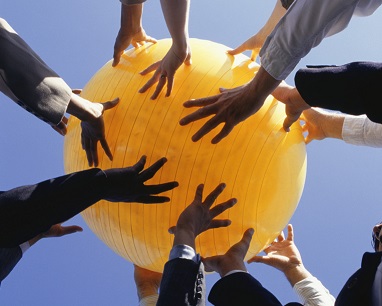
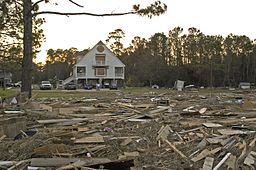
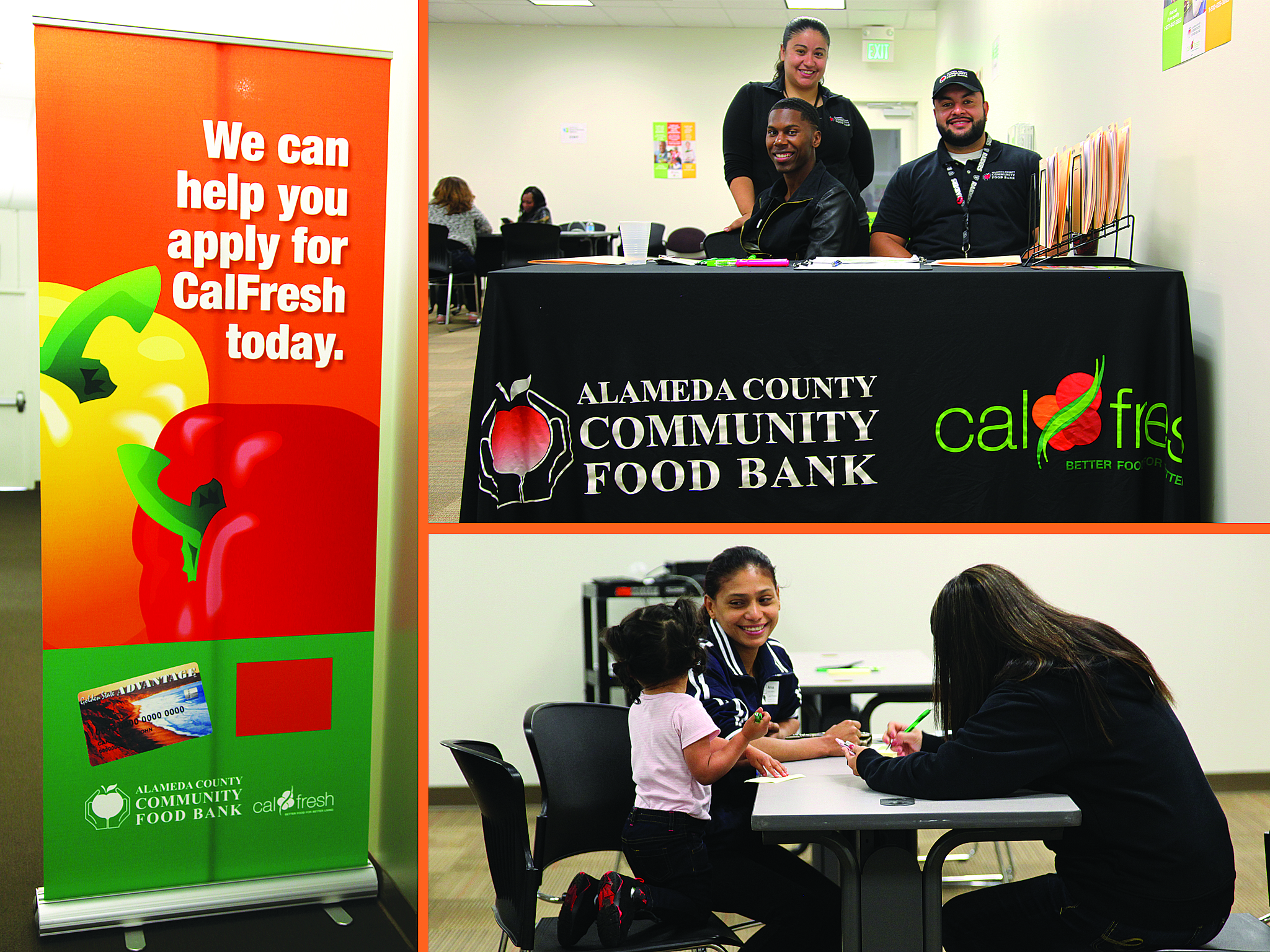
 is Outreach Programs Manager of Alameda County Community Food Bank. She implemented Oasis Insight to track her team's CalFresh Outreach (California’s SNAP program). The Alameda Food Bank provides CalFresh prescreening and application assistance in five different languages. They also offer free training for community agencies to help identify potentially eligible CalFresh recipients. Their CalFresh 101 for beginners gives the basics on program eligibility, including prescreening. CalFresh 102 for advanced learners gives an in-depth look at eligibility for special populations such as seniors, disabled, immigrants, felons and homeless. They have been using Oasis Insight to track their progress for three years.
is Outreach Programs Manager of Alameda County Community Food Bank. She implemented Oasis Insight to track her team's CalFresh Outreach (California’s SNAP program). The Alameda Food Bank provides CalFresh prescreening and application assistance in five different languages. They also offer free training for community agencies to help identify potentially eligible CalFresh recipients. Their CalFresh 101 for beginners gives the basics on program eligibility, including prescreening. CalFresh 102 for advanced learners gives an in-depth look at eligibility for special populations such as seniors, disabled, immigrants, felons and homeless. They have been using Oasis Insight to track their progress for three years.

